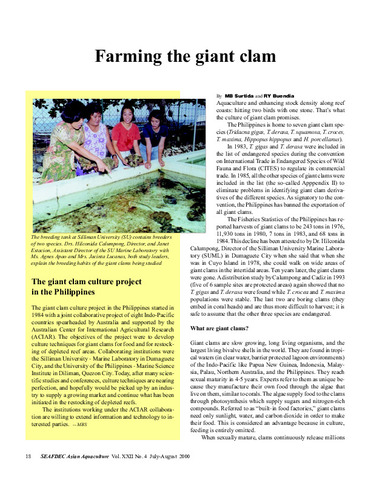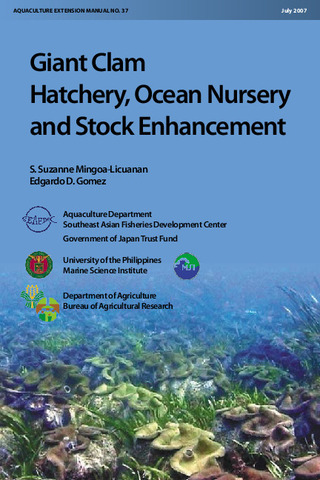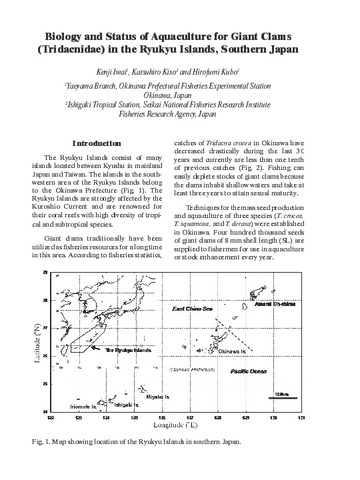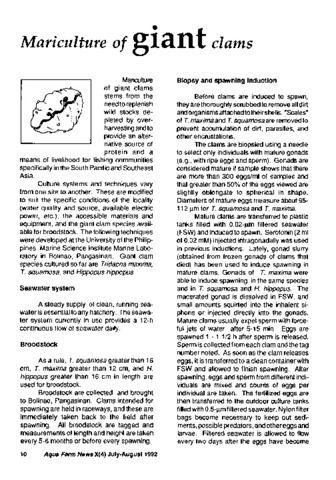Farming the giant clam
- Global styles
- MLA
- Vancouver
- Elsevier - Harvard
- APA
- Help

Date
2000Page views
3,644ASFA keyword
AGROVOC keyword
Taxonomic term
Metadata
Show full item record
Share
Suggested Citation
Surtida, M. B., & Buendia, R. Y. (2000). Farming the giant clam. SEAFDEC Asian Aquaculture , 22(4), 18-19, 30. http://hdl.handle.net/10862/2736
Type
magazineArticleISSN
0115-4974Collections
Related items
Showing items related by title, author, creator and subject.
-
Series: Aquaculture extension manual; No. 37
Giant clam hatchery, ocean nursery and stock enhancement
Mingoa-Licuanan, S. Suzanne; Gomez, Edgardo D. (Aquaculture Department, Southeast Asian Fisheries Development Center, 2007)This manual is meant to serve as a guide to the culture of giant clams (Bivalvia, Subfamily Tridacninae). The first part focuses on hatchery methods. The second part is about the ocean nursery. The first two sections refer ... -
Biology and status of aquaculture for giant clams (Tridacnidae) in the Ryukyu Islands, southern Japan
Iwai, Kenji; Kiso, Katsuhiro; Kubo, Hirofumi (Aquaculture Department, Southeast Asian Fisheries Development Center, 2006)The Ryukyu Islands consist of many islands located between Kyushu in mainland Japan and Taiwan. The islands in the south-western area of the Ryukyu Islands belong to the Okinawa Prefecture. The Ryukyu Islands are strongly ... -
Mariculture of giant clams
Castaños, Milagros T.; Southeast Asian Fisheries Development Center, Aquaculture Department (Aquaculture Department, Southeast Asian Fisheries Development Center, 1992)






